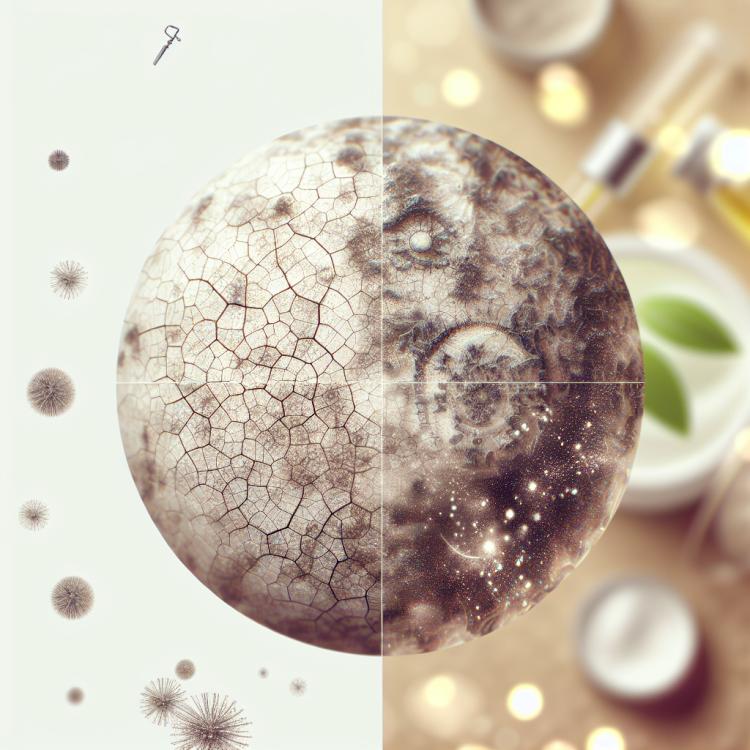
Cracks on the elbows: causes, treatment, and care tips
About the symptom
Cracks on the skin of the elbows are a common problem faced by people of all ages. These cracks can arise due to various factors, including dry skin, allergic reactions, eczema, or psoriasis. Most often, the symptoms manifest as small but painful tears on the skin, which may bleed or become inflamed, creating discomfort and reducing the quality of life. Additionally, cracks on the elbows can become entry points for infections, making timely consultation with a specialist important.
Aside from visible cracks, patients may also experience itching, redness, and swelling of the skin around the affected areas. These symptoms most often appear in cold weather when the skin loses moisture and becomes more sensitive. Furthermore, the cracks may worsen with mechanical impact, such as bending the elbows or during vigorous physical activity. Timely detection and treatment of cracks on the elbows will help not only eliminate discomfort but also prevent complications related to infections or chronic skin diseases.
Diseases
Cracks in the skin of the elbows can be a symptom of various diseases that require careful attention and diagnosis. One of the most common conditions leading to the formation of cracks is eczema. This chronic inflammatory skin condition is accompanied by itching, redness, and the formation of blisters, which can ultimately lead to cracks, especially on the elbows. Dermatitis can also be a cause, causing inflammation and dryness, which promotes the formation of cracks in this area.
Additionally, cracks can be associated with diseases such as psoriasis, which is characterized by scaly patches on the skin, or fungal infections, which often cause itching and inflammation. It is important to note that some endocrine disorders, such as diabetes, can also contribute to skin dryness, which in turn leads to its cracking. Therefore, if you notice persistent cracks on your elbows, it is recommended to consult a specialist to identify the cause and initiate the appropriate treatment.
- Eczema
- Dermatitis
- Psoriasis
- Fungal infections
- Diabetes mellitus
- Vitamin deficiency
- Contact dermatitis
Diagnosis
The diagnosis of cracks on the skin of the elbows begins with a skin examination by a dermatologist. It is important to assess not only the problem itself but also accompanying symptoms, such as itching, burning, or redness. The specialist will discuss the patient’s medical history, including the possibility of chronic diseases, as this may contribute to the appearance of cracks on the skin. In some cases, additional tests may be required for a more accurate diagnosis.
If the cracks on the elbows are caused by an allergic reaction or infection, the doctor may recommend allergy tests or a skin scraping to identify pathogens. It is important to perform a differential diagnosis to rule out more serious conditions such as eczema, psoriasis, or dermatitis. Early identification of the cause will help start effective treatment and avoid relapses.
- Clinical examination by a dermatologist
- Allergy tests
- Skin scraping for pathogens
- Clinical blood tests
- Dermatoscopy
Which doctor to consult
If you are faced with the problem of cracks on the skin of your elbows, it is important not to postpone a visit to a specialist. Cracks can be a sign of various diseases or conditions that require professional assessment and treatment. Depending on the symptoms and their causes, you may need a consultation with a dermatologist, who specializes in skin diseases, or an allergist if an allergic reaction is suspected. These specialists will help identify the exact cause of the cracks and suggest appropriate treatment methods.
In some cases, a consultation with a general practitioner or therapist may also be required, who can conduct a general health assessment. If the cracks on the elbows are accompanied by other symptoms, such as itching, redness, or inflammation, it may be necessary to refer to a rheumatologist to rule out joint diseases or systemic disorders.
- Dermatologist
- Allergist
- Therapist
- Rheumatologist
- Endocrinologist
Types of Cracks on Elbow Skin
Cracks on the skin of the elbows can vary in their characteristics and causes. It is important to understand that different types of cracks may indicate different health issues. Usually, two main groups are distinguished: superficial and deep cracks. Superficial cracks most often occur due to dry skin or lack of moisture. They may cause discomfort, but generally do not require serious treatment.
Deep cracks, on the other hand, are more painful and may be associated with conditions such as eczema, psoriasis, or dermatitis. Such cracks can be accompanied by inflammation, redness, and even fluid discharge. Their treatment requires a more careful approach, including the use of special ointments, creams, and in some cases — medications. Understanding the type of cracks will help in determining the proper treatment and preventive measures.
- Superficial cracks
- Deep cracks
- Bleeding cracks
- Cracks in dermatitis
- Cracks in eczema
Causes of Cracks on Elbow Skin
Cracks on the skin of the elbows can occur for numerous reasons, most of which are related to the disruption of the skin’s integrity and moisture levels. One of the most common causes is a lack of moisture, which can arise from external factors such as cold or dry weather, as well as internal factors, including dehydration of the body. This leads to a loss of skin elasticity and cracking under physical stress.
Additionally, cracks can occur due to everyday injuries and mechanical impacts, such as the constant bending and straightening of the elbows. Allergic reactions to cosmetic or household products can also cause irritation and cracking. It’s important to note that the presence of chronic conditions like eczema or psoriasis can significantly increase the risk of cracks on the skin of the elbows.
- Skin dehydration
- Mechanical damage
- Allergic reactions
- Skin diseases (e.g., eczema, psoriasis)
- Improper skin care
- Lack of vitamins and minerals
Common Associated Pathologies
Cracks on the skin of the elbows can be not only a cosmetic defect but also a sign of various diseases or conditions. Most often, these cracks occur as a result of insufficient skin moisture, but they can also signal the presence of more serious pathologies. Such diseases include dermatitis, eczema, psoriasis, and fungal infections, which can lead to increased dryness and cracks in the skin of the elbows.
In addition, cracks on the elbows may develop against the background of metabolic disorders, such as diabetes or thyroid diseases, which affect the condition of the skin. It is important to pay attention to general health conditions, as disorders in the functioning of various organs can manifest as skin changes. If there are cracks on the elbows, it is necessary to pay attention to accompanying symptoms and, if necessary, consult a specialist for advice and diagnosis.
- Dermatitis
- Eczema
- Psoriasis
- Fungal infections
- Diabetes
- Thyroid diseases
- Atopic dermatitis
Expert Opinion
Cracks in the skin of the elbows are a problem faced by many people, especially in cold weather. Typically, such cracks occur due to high dryness of the skin, frequent injuries to the elbow joints, or the presence of underlying diseases. Dermatologists emphasize that it is important not only to eliminate external symptoms but also to analyze the preceding factors that may contribute to this unpleasant issue.
According to experts, the health of the skin on the elbows is directly related to the overall condition of the body. If the cracks do not heal, it is advisable to consult a doctor, as this may be a sign of dermatological diseases such as eczema or psoriasis. Proper diagnosis and assessment of the skin condition can help choose the best treatment method, which may include both topical and systemic medications.

Treatment of Cracks in Elbow Skin
The treatment of cracks in the skin of the elbows depends on the cause of their occurrence and the severity of the symptoms. It is important to remember that timely diagnosis and the correct choice of treatment can significantly alleviate the patient’s condition and prevent the development of complications. In the early stages, simple measures such as the use of moisturizing creams and protective agents can help, as they are key components in combating skin dryness and cracks. It is necessary to regularly moisturize the skin of the elbows, especially in cold and dry seasons.
If the cracks are more severe or accompanied by pain, it is recommended to consult a dermatologist. The doctor may prescribe therapeutic ointments with antiseptic and anti-inflammatory components, as well as recommend physiotherapy procedures to improve skin condition. In some cases, systemic treatment may be required, especially if the cracks are caused by diseases such as eczema or psoriasis.
- Moisturizing creams and balms
- Therapeutic ointments (hormonal and non-hormonal)
- Physiotherapy
- Diet correction and addition of vitamins
- Antiseptic agents to prevent infection
Complications
Cracks on the skin of the elbows, if the causes are not taken into account and treatment is not pursued, can lead to various complications. One of the most common consequences is infection. Since the cracks are open wounds, infection can easily enter them, resulting in inflammation, redness, and swelling of the skin. Against the background of infection, a purulent process may develop, which requires more intensive treatment and medical intervention.
Furthermore, the cracks can cause pain syndrome, making everyday activities difficult, such as working on a computer or doing household chores. Without proper care and treatment, a chronic form of the disease may develop, where the cracks will recur, and the skin will lose its elasticity and firmness. This can also become a source of constant discomfort for a person.
- Skin infections (dermatitis, eczema)
- Purulent inflammations (boils, abscesses)
- Chronic pain symptoms
- Increased recurrences (repeated appearance of cracks)
- Deterioration of quality of life (limitations in mobility and usual activities)